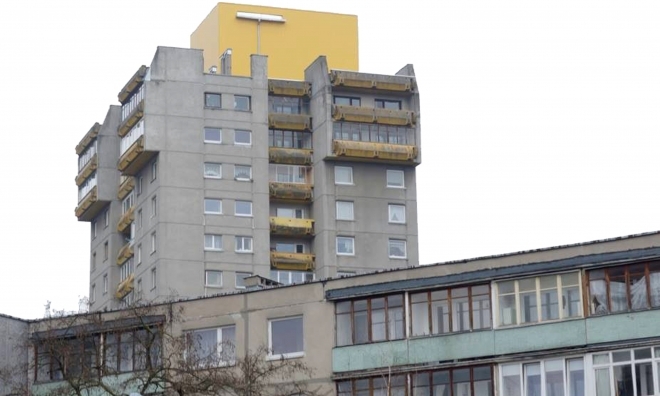MAPPING POST-SOCIALIST URBAN SPACES IN VILNIUS - Presentation of experimental mapping projects of Lazdynai and Šnipiškės

The two week winter school is exploring dilemmas of contemporary urbanisation in Eastern Europe by performing a deep mapping of two districts of Vilnius: Lazdynai and Šnipiškės. It is now 20 years after the fall of communism in Eastern Europe, and radical changes have occurred both in the social practices and urban forms of the cities of the region such as Vilnius.
At the same time the life of these cities is also shaped by the fact that large sections of their built environments are still comprised of infrastructure constructed to form the habitats of urban life under very different social paradigms. Thus, in Vilnius if you look beyond the city’s increasingly tourist visited UNESCO heritage centre, you encounter districts such as Šnipiškės, where early 20th century wooden housing sits back-to-back with post-modernist skyscrapers, or Lazdynai, where an acclaimed socialist modernist sleeping district now struggles to function in new configurations.
The aim of the winter school is to perform a bottom-up exploration of how social practices are today emerging in relation to the material infrastructures and local historical perceptions of each of the two very different case districts, in order to build a fuller picture of the processes involved in postsocialist urbanism.
This winter school, organized by the European Humanities University’s Laboratory of Critical Urbanism in collaboration with the Vilnius Center for German Studies and Lithuanian partners, such as Architektūros fondas and Laimkis.lt, has brought together a group of German, Belarusian, Lithuanian, Czech and Estonian students from disciplines ranging from architecture to urban studies, cultural geography and anthropology in an intensive programme aiming to produce new modes of researching the development of urban forms and the transformations of the societies of Eastern Europe.
In so doing the winter school has engaged with the potential and problems of mapping at a time when the spread of digital technologies is multiplying both the quantity and range of maps being produced. The final product of the students’ work is, thus, an experimental mapping project of one aspect of the life of either of the two case study districts which they will present in an open meeting in each of the districts and in a publication scheduled for autumn 2014.
The projects will be presented:
7. March (Friday) 11.00 a.m.
Lazdynų seniūnija (Erfurto 29, Vilnius)
7. March (Friday) 3.30 p.m.
Energy and Technology Museum (Rinktinės 2, Vilnius)
Lazdynai. Photo: Maximilian Hellriegel, 2014